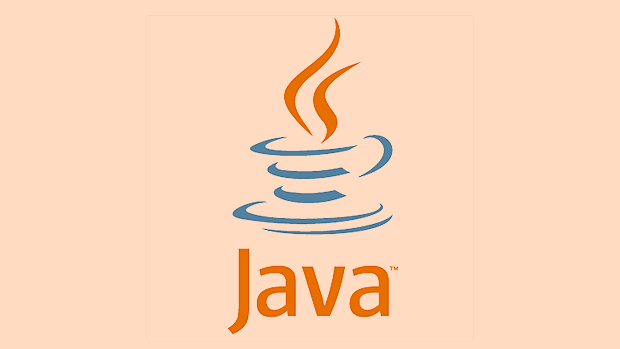Race conditions occur when multiple threads access shared data, leading to inconsistencies; fix with synchronized, AtomicInteger, or ReentrantLock. 2. Deadlock arises when threads wait indefinitely for each other’s locks; prevent by consistent lock ordering, using tryLock with timeout, and monitoring with jstack. 3. Visibility issues happen due to CPU caching or reordering; resolve with volatile keyword, though compound operations still need synchronization. 4. Liveness problems include starvation, where threads are denied resources, mitigated by fair locks, and livelock, where threads make no progress, resolved with random backoffs. 5. Misusing wait()/notify() causes missed signals or exceptions; always use wait() in a while loop within a synchronized block. 6. Prefer high-level concurrency tools like ExecutorService, ConcurrentHashMap, BlockingQueue, and CountDownLatch to reduce error risk. To avoid concurrency issues, minimize shared mutable state and rely on proven thread-safe utilities and immutable objects whenever possible.

Concurrency in Java allows multiple threads to run simultaneously, improving performance and responsiveness—especially in server-side applications. But with great power comes great complexity. When not handled properly, concurrency can introduce subtle, hard-to-debug issues. Here are the most common problems and how to solve them effectively.

1. Race Conditions and Data Inconsistency
A race condition occurs when multiple threads access shared data simultaneously, and at least one of them modifies it, leading to unpredictable results.
Example:

public class Counter {
private int count = 0;
public void increment() { count ; }
public int getCount() { return count; }
}Calling increment() from multiple threads can result in lost updates because count is not atomic—it involves read, modify, and write steps.
Solutions:

Use
synchronizedkeyword:public synchronized void increment() { count ; }This ensures only one thread can execute the method at a time.
Use
java.util.concurrent.atomicclasses:private AtomicInteger count = new AtomicInteger(0); public void increment() { count.incrementAndGet(); }Atomic classes provide lock-free thread-safe operations.
Use explicit locks (
ReentrantLock):private final ReentrantLock lock = new ReentrantLock(); public void increment() { lock.lock(); try { count ; } finally { lock.unlock(); } }Offers more control than
synchronized, including try-lock and fairness policies.
2. Deadlock
Deadlock happens when two or more threads are blocked forever, each waiting for a resource held by the other.
Example:
Thread A holds Lock 1 and waits for Lock 2.
Thread B holds Lock 2 and waits for Lock 1 → deadlock.
How to avoid:
Always acquire locks in a consistent order: Enforce a global ordering (e.g., always acquire Lock 1 before Lock 2).
Use timeouts when acquiring locks:
if (lock.tryLock(1000, TimeUnit.MILLISECONDS)) { try { // critical section } finally { lock.unlock(); } } else { // handle timeout }Use tools like
jstackto detect deadlocks during development.
3. Thread Interference and Visibility Issues
Even if operations appear atomic, the JVM and CPU optimizations (like caching in CPU registers or reordering instructions) can cause one thread not to see changes made by another.
Example:
private boolean running = true;
public void run() {
while (running) {
// do work
}
}One thread sets running = false, but another thread may never see the update due to caching.
Solution: Use volatile keyword:
private volatile boolean running = true;
volatile ensures:
- Writes to the variable are immediately visible to other threads.
- Prevents certain compiler/CPU reorderings around the variable.
For compound actions (like read-modify-write), volatile alone isn't enough—combine with synchronization or atomic classes.
4. Liveness Problems: Livelock and Starvation
Starvation: A thread is perpetually denied access to resources. For example, low-priority threads may never get CPU time.
- Fix: Use fair locking policies (
new ReentrantLock(true)), avoid indefinite loop waits without yielding.
- Fix: Use fair locking policies (
Livelock: Threads are active but unable to make progress (e.g., two threads repeatedly respond to each other's actions).
- Fix: Introduce randomness or backoff strategies. For example, retry with a random delay.
5. Improper Use of wait(), notify(), and notifyAll()
Using wait() without a loop or outside a synchronized block can cause IllegalMonitorStateException or missed signals.
Correct pattern:
synchronized (lock) {
while (conditionNotMet) {
lock.wait(); // Releases lock and waits
}
// proceed when condition is met
}Always:
- Call
wait()inside awhileloop (notif) to recheck the condition after waking up. - Ensure the lock is held before calling
wait()ornotify().
Alternatively, use higher-level concurrency utilities.
6. Prefer High-Level Concurrency Utilities
Instead of managing threads and locks manually, use the java.util.concurrent package:
ExecutorServicefor thread management:ExecutorService executor = Executors.newFixedThreadPool(4); executor.submit(() -> doWork());
ConcurrentHashMap,CopyOnWriteArrayListfor thread-safe collections.BlockingQueuefor producer-consumer patterns:BlockingQueue<Task> queue = new LinkedBlockingQueue<>();
CountDownLatch,CyclicBarrier,Semaphorefor coordination.
These are battle-tested, efficient, and reduce the chance of errors.
Basically, while Java gives you powerful tools for concurrency, the key is to minimize shared mutable state and lean on proven utilities instead of rolling your own synchronization. Most issues stem from assuming thread safety when it’s not guaranteed—so when in doubt, check the docs or use immutable objects and thread-safe classes.
The above is the detailed content of Solving Common Concurrency Issues in Java. For more information, please follow other related articles on the PHP Chinese website!

Hot AI Tools

Undress AI Tool
Undress images for free

Undresser.AI Undress
AI-powered app for creating realistic nude photos

AI Clothes Remover
Online AI tool for removing clothes from photos.

Clothoff.io
AI clothes remover

Video Face Swap
Swap faces in any video effortlessly with our completely free AI face swap tool!

Hot Article

Hot Tools

Notepad++7.3.1
Easy-to-use and free code editor

SublimeText3 Chinese version
Chinese version, very easy to use

Zend Studio 13.0.1
Powerful PHP integrated development environment

Dreamweaver CS6
Visual web development tools

SublimeText3 Mac version
God-level code editing software (SublimeText3)
 Differences Between Callable and Runnable in Java
Jul 04, 2025 am 02:50 AM
Differences Between Callable and Runnable in Java
Jul 04, 2025 am 02:50 AM
There are three main differences between Callable and Runnable in Java. First, the callable method can return the result, suitable for tasks that need to return values, such as Callable; while the run() method of Runnable has no return value, suitable for tasks that do not need to return, such as logging. Second, Callable allows to throw checked exceptions to facilitate error transmission; while Runnable must handle exceptions internally. Third, Runnable can be directly passed to Thread or ExecutorService, while Callable can only be submitted to ExecutorService and returns the Future object to
 Asynchronous Programming Techniques in Modern Java
Jul 07, 2025 am 02:24 AM
Asynchronous Programming Techniques in Modern Java
Jul 07, 2025 am 02:24 AM
Java supports asynchronous programming including the use of CompletableFuture, responsive streams (such as ProjectReactor), and virtual threads in Java19. 1.CompletableFuture improves code readability and maintenance through chain calls, and supports task orchestration and exception handling; 2. ProjectReactor provides Mono and Flux types to implement responsive programming, with backpressure mechanism and rich operators; 3. Virtual threads reduce concurrency costs, are suitable for I/O-intensive tasks, and are lighter and easier to expand than traditional platform threads. Each method has applicable scenarios, and appropriate tools should be selected according to your needs and mixed models should be avoided to maintain simplicity
 Best Practices for Using Enums in Java
Jul 07, 2025 am 02:35 AM
Best Practices for Using Enums in Java
Jul 07, 2025 am 02:35 AM
In Java, enums are suitable for representing fixed constant sets. Best practices include: 1. Use enum to represent fixed state or options to improve type safety and readability; 2. Add properties and methods to enums to enhance flexibility, such as defining fields, constructors, helper methods, etc.; 3. Use EnumMap and EnumSet to improve performance and type safety because they are more efficient based on arrays; 4. Avoid abuse of enums, such as dynamic values, frequent changes or complex logic scenarios, which should be replaced by other methods. Correct use of enum can improve code quality and reduce errors, but you need to pay attention to its applicable boundaries.
 Understanding Java NIO and Its Advantages
Jul 08, 2025 am 02:55 AM
Understanding Java NIO and Its Advantages
Jul 08, 2025 am 02:55 AM
JavaNIO is a new IOAPI introduced by Java 1.4. 1) is aimed at buffers and channels, 2) contains Buffer, Channel and Selector core components, 3) supports non-blocking mode, and 4) handles concurrent connections more efficiently than traditional IO. Its advantages are reflected in: 1) Non-blocking IO reduces thread overhead, 2) Buffer improves data transmission efficiency, 3) Selector realizes multiplexing, and 4) Memory mapping speeds up file reading and writing. Note when using: 1) The flip/clear operation of the Buffer is easy to be confused, 2) Incomplete data needs to be processed manually without blocking, 3) Selector registration must be canceled in time, 4) NIO is not suitable for all scenarios.
 How Java ClassLoaders Work Internally
Jul 06, 2025 am 02:53 AM
How Java ClassLoaders Work Internally
Jul 06, 2025 am 02:53 AM
Java's class loading mechanism is implemented through ClassLoader, and its core workflow is divided into three stages: loading, linking and initialization. During the loading phase, ClassLoader dynamically reads the bytecode of the class and creates Class objects; links include verifying the correctness of the class, allocating memory to static variables, and parsing symbol references; initialization performs static code blocks and static variable assignments. Class loading adopts the parent delegation model, and prioritizes the parent class loader to find classes, and try Bootstrap, Extension, and ApplicationClassLoader in turn to ensure that the core class library is safe and avoids duplicate loading. Developers can customize ClassLoader, such as URLClassL
 Exploring Different Synchronization Mechanisms in Java
Jul 04, 2025 am 02:53 AM
Exploring Different Synchronization Mechanisms in Java
Jul 04, 2025 am 02:53 AM
Javaprovidesmultiplesynchronizationtoolsforthreadsafety.1.synchronizedblocksensuremutualexclusionbylockingmethodsorspecificcodesections.2.ReentrantLockoffersadvancedcontrol,includingtryLockandfairnesspolicies.3.Conditionvariablesallowthreadstowaitfor
 Handling Common Java Exceptions Effectively
Jul 05, 2025 am 02:35 AM
Handling Common Java Exceptions Effectively
Jul 05, 2025 am 02:35 AM
The key to Java exception handling is to distinguish between checked and unchecked exceptions and use try-catch, finally and logging reasonably. 1. Checked exceptions such as IOException need to be forced to handle, which is suitable for expected external problems; 2. Unchecked exceptions such as NullPointerException are usually caused by program logic errors and are runtime errors; 3. When catching exceptions, they should be specific and clear to avoid general capture of Exception; 4. It is recommended to use try-with-resources to automatically close resources to reduce manual cleaning of code; 5. In exception handling, detailed information should be recorded in combination with log frameworks to facilitate later
 How does a HashMap work internally in Java?
Jul 15, 2025 am 03:10 AM
How does a HashMap work internally in Java?
Jul 15, 2025 am 03:10 AM
HashMap implements key-value pair storage through hash tables in Java, and its core lies in quickly positioning data locations. 1. First use the hashCode() method of the key to generate a hash value and convert it into an array index through bit operations; 2. Different objects may generate the same hash value, resulting in conflicts. At this time, the node is mounted in the form of a linked list. After JDK8, the linked list is too long (default length 8) and it will be converted to a red and black tree to improve efficiency; 3. When using a custom class as a key, the equals() and hashCode() methods must be rewritten; 4. HashMap dynamically expands capacity. When the number of elements exceeds the capacity and multiplies by the load factor (default 0.75), expand and rehash; 5. HashMap is not thread-safe, and Concu should be used in multithreaded






